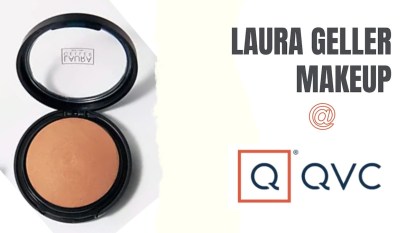How to Grow Out Bangs: 5 Easy Strategies From Hairstylists That Will Make the Process Easier
See why stylists say trimming them as they grow can help

Going all in and getting bangs in the first place just might be the easy part when it comes to finally deciding to grow them out. After all, maintaining bangs can be such a commitment —getting trims every few weeks can be time-consuming and costly — so sooner or later you might decide to ditch them. Ah, but the dreaded awkward phase that goes hand-in-hand with growing them out can be so frustrating — and depending on the length of bangs you have, it may take up to 6 months! Luckily, we’ve got some easy solutions! Scroll on to discover how to grow out bangs and make the process as painless as possible.
How to grow out bangs
As your bangs grow out, it takes a lot of patience waiting for them to catch up with the length of the rest of the hair, which is also dependent on the style of bangs you start out with. The pros we spoke to said getting a little creative with styling can help them to blend in better.
“The hardest bangs to grow out include cropped, choppy bangs or blunt ones that hit above the eyebrow because they’re more noticeable,” says William Whatley, Creative Education Director for Scruples Haircare, and former hair stylist on Ambush Makeover. “Once you get the hair past the eyebrow line, to about the bridge of the nose, they’ll look much better.” So what are the best ways to do that? Read on!
1. How to grow out bangs: Incorporate a part
When trying to grow out a bang our experts agree perhaps the easiest way is to play around with different angles and parts to see which one works best to get you through those rough first few weeks. “Try deep side parts or middle parts,” suggests Elba Rodriguez, New York City-based hairstylist and John Frieda House of Frieda Ambassador. “Or even try the opposite side of what you usually do.” Whatley adds that creating a deep side part also helps to create more volume so hair looks thicker.
Pro tip: Grab a blowdryer and use a volumizing spray, like It’s A 10 Miracle Blowdry Volumizer, to help keep hair where you want it. Spray the product at the roots of bangs and use the heat from the blow dryer to help set strands.
Related: Why Side Swept Bangs Are the Hot New Trend for Women Over 50 + How They Make Hair Look Thicker
2. How to grow out bangs: Opt for a slicked back style

When it comes to how to grow out bangs you may realize some lengths make it difficult to create a part — but there’s still hope! “If this is the case, the best way to ensure bangs don’t look and feel so awkward is pushing them back to blend into the rest of your hair,” says Rodriguez.
To do: Grab some gel, like Garnier Fructis Style Pure Clean Extra Strong Hold Hair Gel, and smooth damp bangs into a slicked back style like a ponytail or braid. Or use a handy hair accessory to keep bangs back. “In my opinion headbands are the best and easiest option to do this,” adds Rodriguez. “You can wear them to keep your hair back or flatten bangs forward which allows you to position them better and hold in place.”
3. How to grow out bangs: Pin them up
The shorter your bangs are, the harder they might be to style, but the experts we spoke to say pinning your bangs to the side or away from your face can help. When it comes to how to grow out bangs and make them look stylish, bobby pins that are similar to your hair color are great to pin back bangs. For a little more volume, Rodriguez also suggests you can twist bangs back, then take a few pins and secure hair in place. Or try hair clips like cute butterfly clips, such as The Hair Edit Petite Papillon Mini Claw Clips, for another fun look that will hold bangs in place.
4. How to grow out bangs: Get strategic trims
As counterintuitive as it seems, the pros say when it comes to how to grow out bangs, trimming them actually helps. The reason: Making bangs lighter and less heavy will make them more face-framing. As your bangs grow, some parts of your bangs will grow faster than others, so you might be tempted to cut them yourself to even them out.
The key here is to remember less is more. You can try trimming them at home, or visit your stylist and ask them to even them out. Whatley says plenty of stylists will trim bangs for free if clients ask. “I never charge clients for bang trims since bangs are part of the hairstyle I created for them,” he explains. “And how good that hairstyle looks reflects directly back onto me.”
Related: Hairstylists Share the 5 Easy Steps It Takes to Cut Your Own Bangs at Home
5. How to grow out bangs: Strengthen strands
Another important thing to consider when it comes to how to grow out bangs is that weak strands are more prone to breakage, which can make “operation grow out bangs” take longer. That’s why our experts stress that you want to keep your hair in the best shape possible in order to speed up the process. An easy way to promote hair growth is to apply some castor oil, like Fovcos Organic Castor Oil for Hair Growth, to bangs. The oil not only hydrates hair, but its high stores of ricinoleic acid also fortify hair follicles and improve blood flow to encourage hair growth.
To do: Rub 1 tsp. of castor oil into bangs and gently massage it into your scalp with your fingertips. Then cover your head with a shower cap and leave on for 4 hours; after that shampoo and rinse as usual. You’ll soon be bang-free in no time!
For more expert-backed hair care tips and tricks:
Trichologist Reveals the Top Hair Myths and What to Do Instead for a Thick, Healthy Head of Hair
How to Protect Your Hair and Scalp From the Sun, Plus the Products That Make It Easy













